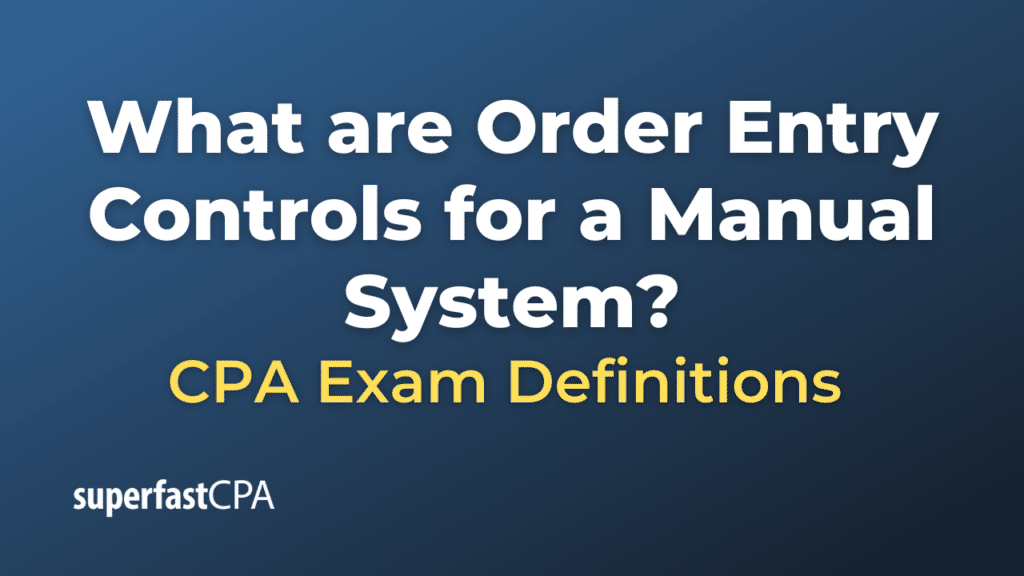Order Entry Controls for a Manual System
Order entry controls in a manual system are similar in principle to those in an automated system, but they are typically carried out by people rather than software. These controls are designed to ensure the accuracy, completeness, and security of the order data. Here are some common types of order entry controls for a manual system:
- authorization: For each order, the individual taking the order should verify the customer’s identity and ensure they have the necessary authorization to place the order. This might be done by checking a customer number or asking for some form of identification.
- Form Completion: An order form should be completed for each order, with all necessary fields filled out. This might include the customer’s name and address, the items ordered, the quantity, the price, and the delivery instructions.
- Verification: Before the order is finalized, a second person should verify the order against the original request to ensure accuracy. This might involve checking the items ordered, the quantity, and the calculation of the total cost.
- Separation of Duties: Ideally, the person taking the order should not be the same person who fulfills it or who receives payment. This separation of duties can help prevent fraud.
- Secure Storage: Order forms and payment details should be stored securely to prevent unauthorized access. This might involve locking them in a secure location and limiting access to authorized personnel only.
- Record Keeping: All orders should be recorded in a log or register, with a unique identifier for each order. This will allow for easy tracking and verification of orders.
Remember that manual systems can be more prone to errors due to their reliance on human input and lack of automated checks, so it’s particularly important to have strong controls in place. However, the specific controls needed will depend on the nature of the business and the potential risks involved.
Example of Order Entry Controls for a Manual System
Let’s consider a small retail shop as an example to illustrate how order entry controls might work in a manual system:
- Authorization: A customer, John, visits the shop and selects several items. The cashier confirms John’s identity by asking for his membership card, ensuring that he has the necessary authorization to purchase items and avail any members-only discounts.
- Form Completion: The cashier fills out an order form, recording the details of John’s purchases, including the items’ names, quantities, individual prices, and total cost. John’s membership number and contact details are also recorded.
- Verification: Before finalizing the order, a store manager reviews the completed order form against the items John has selected, verifying that the items and quantities match and the total cost has been calculated correctly.
- Separation of Duties: The cashier, who took John’s order, hands off the finalized order form to another employee who packs the items for John. This separation of duties reduces the chances of any single employee manipulating the system for fraudulent purposes.
- Secure Storage: The completed order form, now serving as a record of the transaction, is stored in a locked cabinet in the manager’s office to prevent unauthorized access.
- Record Keeping: The store manager later logs the day’s orders in a register, recording a unique identifier for each transaction (such as the order form number), the date, the customer’s name, and the total amount of the order.
This example shows how various manual controls can help ensure accuracy and security in a manual order entry system. It’s important to note that while this approach is suitable for a small operation like a retail shop, larger businesses or those handling more complex transactions would likely require a more sophisticated, computerized system.












